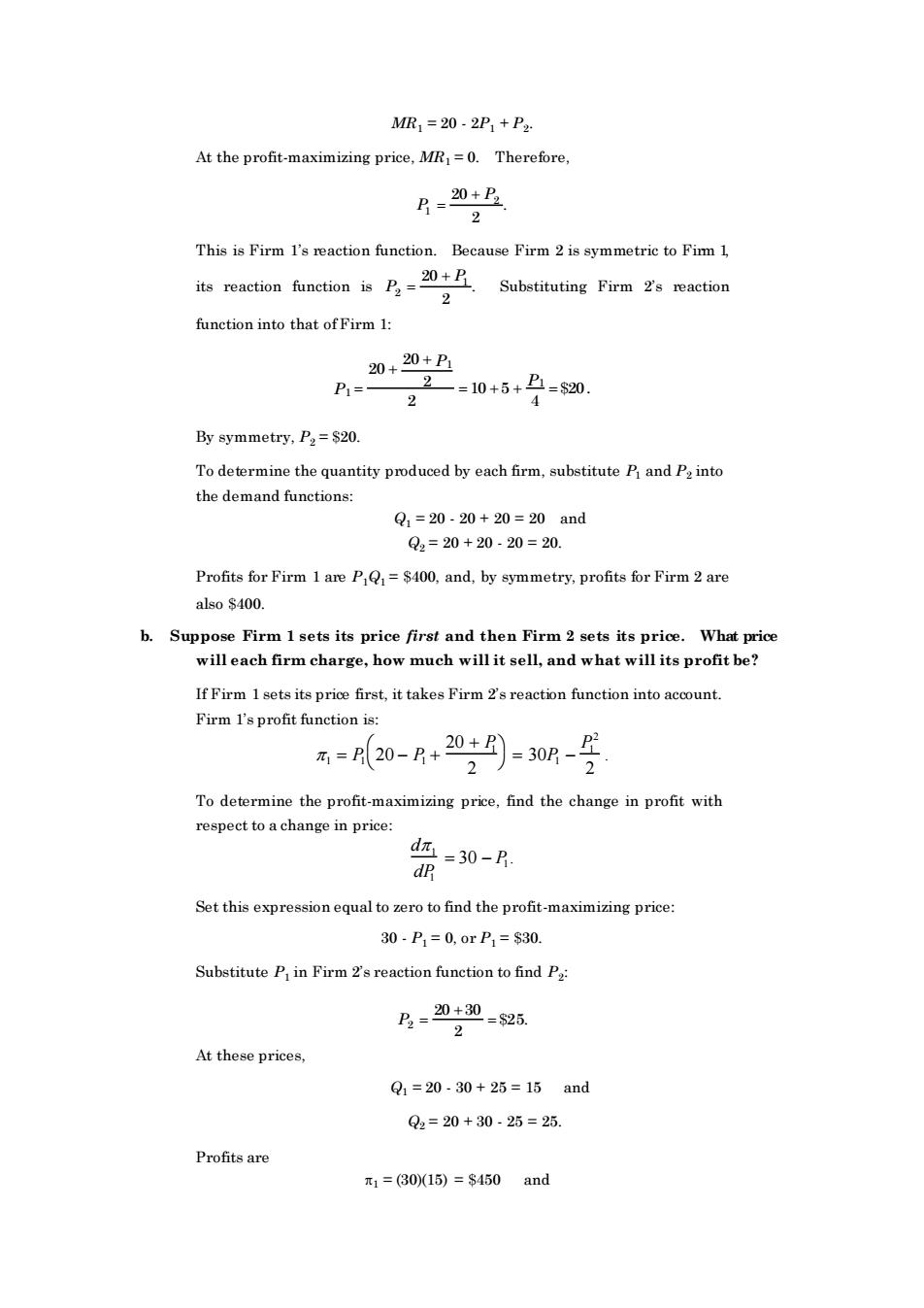正在加载图片...

MR1=20.2P1+P At the profit-maximizing price.MR=0.Therefore, =20+2 2 This is Firm I's reaction function.Because Firm 2 is symmetric to Fim its reaction function Substituting Firm 2's reaction 2 function into that of Firm 1: 20+20 P1 2 =10+5+-0. By symmetry,P:=$20. Todetermine the quantity produced by eachfrm,substitute Pand Pint the demand functions: Q1=20.20+20=20and 22=20+20-20=20. Profits for Firm 1 are PQ=$400,and,by symmetry,profits for Firm 2 are also$400,. b.Suppose Firm Isets its price first and then Firm2setsitspri iench rm charge.bow much andhatpront IfFirm 1sets its price first,it takes Firm 2s reaction function into account Firm I's profit function is: 属=R(20-R+20生)=30n-号 To determine the profit-maximizing price.find the change in profit with respect to a change in price: =30- dx. Set this expression equal to zero to find the profit-maximizing price 30-P1=0,orP1=$30. Substitute P in Firm2's reaction function to find P B=20+30=25. 2 At these prices, 21=20.30+25=15and Q2=20+30.25=25. Profits are m1=(80(15=$450andMR1 = 20 - 2P1 + P2 . At the profit-maximizing price, MR1 = 0. Therefore, P P 1 2 20 2 = + . This is Firm 1’s reaction function. Because Firm 2 is symmetric to Firm 1, its reaction function is P P 2 1 20 2 = + . Substituting Firm 2’s reaction function into that of Firm 1: 1 1 1 20 20 2 2 10 5 4 P P P = . + + = + + =$20 By symmetry, P2 = $20. To determine the quantity produced by each firm, substitute P1 and P2 into the demand functions: Q1 = 20 - 20 + 20 = 20 and Q2 = 20 + 20 - 20 = 20. Profits for Firm 1 are P1Q1 = $400, and, by symmetry, profits for Firm 2 are also $400. b. Suppose Firm 1 sets its price first and then Firm 2 sets its price. What price will each firm charge, how much will it sell, and what will its profit be? If Firm 1 sets its price first, it takes Firm 2’s reaction function into account. Firm 1’s profit function is: 1 = P1 20 − P1 + 20 + P1 2 = 30P1 − P1 2 2 . To determine the profit-maximizing price, find the change in profit with respect to a change in price: d1 dP1 = 30 − P1 . Set this expression equal to zero to find the profit-maximizing price: 30 - P1 = 0, or P1 = $30. Substitute P1 in Firm 2’s reaction function to find P2 : P2 20 30 2 = + =$25. At these prices, Q1 = 20 - 30 + 25 = 15 and Q2 = 20 + 30 - 25 = 25. Profits are 1 = (30)(15) = $450 and